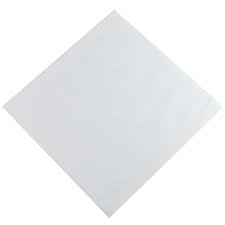记忆方法
记忆“napkin”可以通过联想其结构和含义。可以将“napkin”想象为“na”是“拿”的缩写,即拿起一个“pin”形的薄布。这样,你就联想到了在餐桌上拿起一个针形状的小布(即餐巾)。这种方法通过将单词分解并赋予形象化的意义来帮助记忆。
以上内容由AI生成, 仅供参考和借鉴
中文词源
napkin 餐巾布,餐巾纸
来自拉丁语mappa,布,词源同map,-kin,小词后缀。引申词义餐巾布,餐巾纸。
英语词源
- napkin
-
napkin: [15] Latin mappa meant ‘cloth’ (it is the source of English map). As it passed into Old French its m became transformed into an n, producing nappe. This was borrowed into English as the long-defunct nape ‘cloth’, which, with the addition of the diminutive suffix -kin, has bequeathed napkin to modern English. The abbreviation nappy dates from the early 20th century. From derivatives of Old French nappe English also gets apron and napery [14].
=> apron, map - napkin (n.)
- late 14c., "a table napkin," from nape "a tablecloth" (from Old French nape "tablecloth, cloth cover, towel," from Latin mappa; see map (n.)) + Middle English -kin "little." No longer felt as a diminutive. The Old French diminutive was naperon (see apron). The shift of Latin -m- to -n- was a tendency in Old French (conter from computare, printemps from primum, natte "mat, matting," from matta). Middle English also had naperie "linen objects; sheets, tablecloths, napkins, etc.;" also, "place where the linens are kept."
权威例句
- 1. He wiped away the blood with a paper napkin.
- 他用纸巾将血迹擦去。
- 2. Michael mopped up quickly with his napkin.
- 迈克尔迅速用餐巾将其揩干。
- 3. He dabbed at his lips with the napkin.
- 他用餐巾拭了拭嘴唇。
- 4. Mary Ann tore the edge off her napkin.
- 玛丽·安撕掉了餐巾的边儿。
- 5. He dabbed at the spot on his tie with a napkin.
- 他用餐巾快速擦去领带上的污点.
